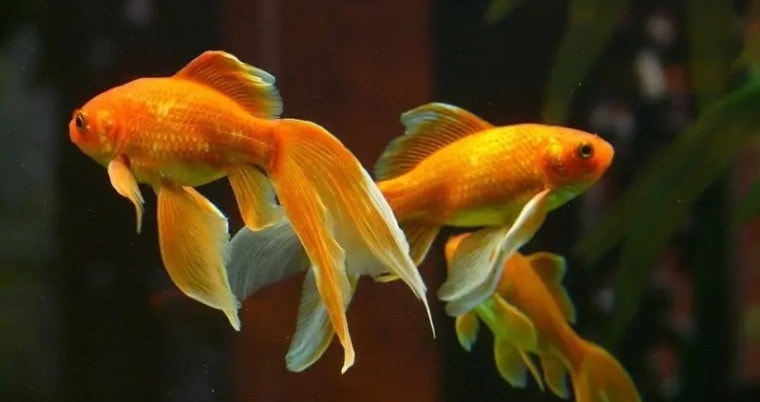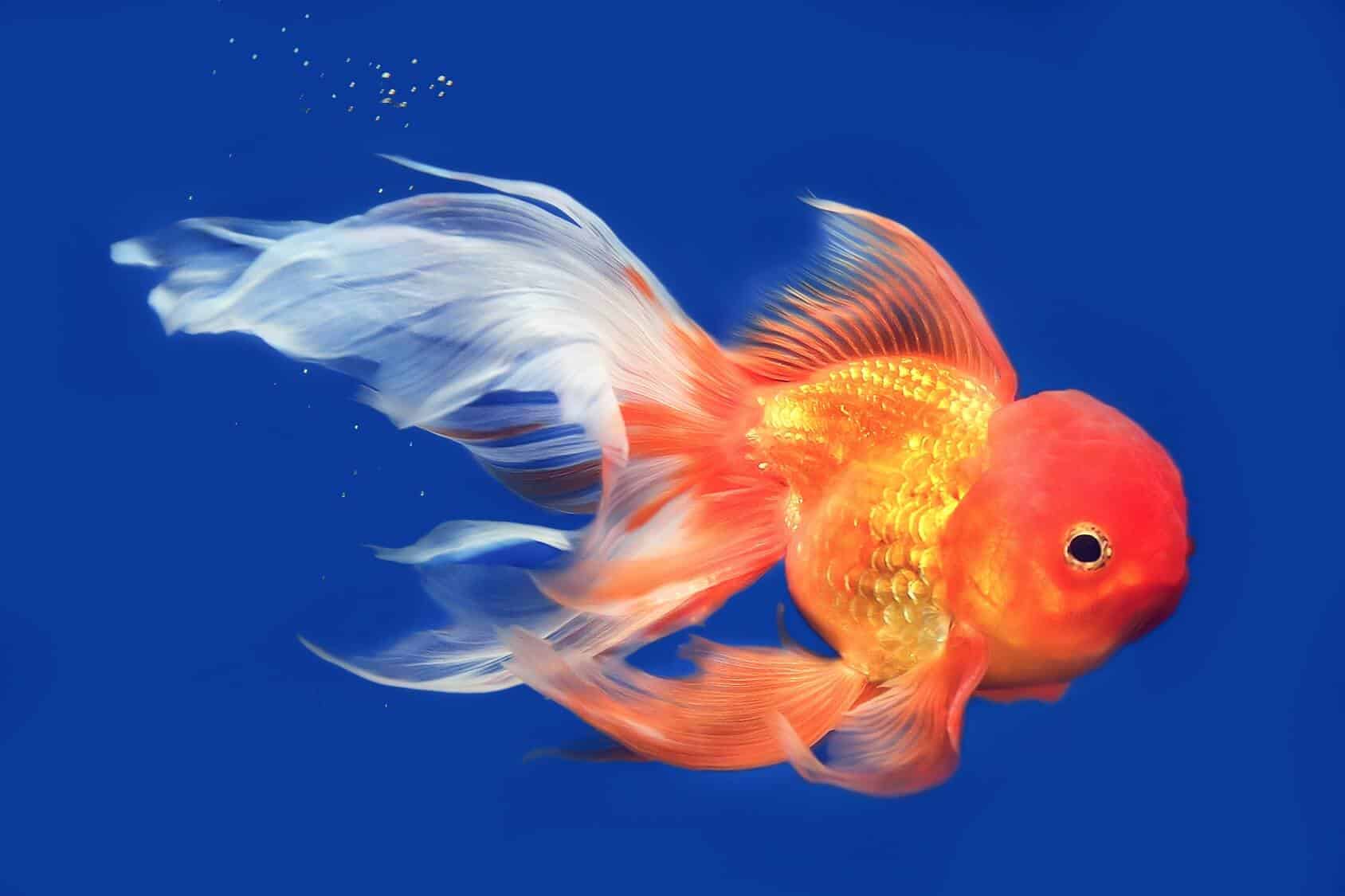Ever wondered if two different types of goldfish can breed? Well, wonder no more because I've got the answer for you! 🐠🐠 It's a fascinating topic that many goldfish enthusiasts are curious about. In this article, we'll dive into the world of goldfish breeding and explore whether different types can successfully mate. You're in for a treat, so let's get started!
Goldfish come in a wide variety of beautiful colors, shapes, and sizes. From fan-tailed to bubble-eyed, each type has its own unique characteristics. Naturally, this leads to the question of whether these different types can interbreed and produce offspring. The short answer is, yes, it is possible for two different types of goldfish to breed! However, there are several factors to consider, such as the compatibility of their genetics and physical differences.
When it comes to breeding goldfish, it's important to ensure that the parents are healthy and suitable for reproduction. Some types of goldfish have different needs and requirements, so it's essential to research and understand these specificities. Additionally, physical differences between the two types, such as body shape or fin length, can also affect successful breeding. In the upcoming article, we'll explore these factors in more detail, providing you with a comprehensive understanding of the breeding process.
So, if you've ever wondered about the possibility of breeding two different types of goldfish, you're in for an enlightening read. We'll delve into the intricacies of goldfish genetics and discuss the potential outcomes of such breeding attempts. Whether you're a seasoned goldfish enthusiast or simply curious about this topic, keep reading to discover the fascinating world of goldfish breeding!

Can Two Different Types Of Goldfish Breed
Goldfish breeding is a fascinating aspect of the hobby that many enthusiasts are eager to explore. One of the questions that often arise is whether two different types of goldfish can successfully breed. In this article, we will delve into the intricacies of goldfish breeding, including the basics, factors that affect breeding, different types of goldfish breeds, and the possibility of breeding two different goldfish types.
The Basics of Goldfish Breeding
Before diving into the specifics, it is important to understand the reproductive process of goldfish. Goldfish are egg-layers, and their breeding season typically occurs during the spring and summer months. During this time, male goldfish develop small white tubercles or breeding spots on their gill covers and pectoral fins, while female goldfish develop a rounder and thicker abdomen.
In order to successfully breed goldfish, several conditions must be met. Firstly, a separate breeding tank is needed to provide a controlled and suitable environment for the breeding pair. The water temperature should be maintained around 68-74 degrees Fahrenheit (20-23 degrees Celsius), and the pH level should be between 7 and 8. It is also important to provide adequate hiding places, such as plants or spawning mops, for the female to deposit her eggs.
During the breeding process, the male goldfish vigorously chases the female, nudging her sides and belly in an attempt to induce egg release. The female then releases her eggs, which are fertilized by the male's milt. Once the eggs are fertilized, they will adhere to any surface they come into contact with.

Factors That Affect Goldfish Breeding
Several factors can significantly impact the success of goldfish breeding. The most crucial factor is water temperature. Goldfish require a specific temperature range to initiate breeding behaviors and ensure the viability of their eggs. If the water temperature is too cold, the breeding process will not occur, whereas excessively high temperatures may result in infertile eggs.
Water quality also plays a crucial role in goldfish breeding. Poor water conditions can stress the fish, leading to a decreased likelihood of breeding success. It is essential to maintain optimal water parameters, including appropriate levels of ammonia, nitrites, and nitrates, as well as regular water changes to ensure a clean and healthy environment for breeding.
Feeding and nutrition are additional key factors to consider when attempting to breed goldfish. A well-balanced diet that includes high-quality protein-rich foods, such as brine shrimp, bloodworms, and pellets formulated for breeding fish, can improve the overall health and reproductive readiness of goldfish.
Furthermore, physical and genetic traits also influence breeding success. In terms of physical traits, goldfish with desirable body shapes and fin configurations are more likely to attract a mate. Genetic traits, on the other hand, can determine whether certain goldfish pairs are compatible for breeding. It is important to consider the genetic history and potential health issues associated with breeding certain types of goldfish.
Different Types of Goldfish Breeds
Goldfish are available in a wide variety of breeds, each with its own unique characteristics and traits. Some of the most popular breeds include the common goldfish, comet goldfish, fantail goldfish, and the elegant ryukin goldfish. Each breed has distinct features, such as body shape, fin configuration, and coloration, making them highly sought after by enthusiasts.
Understanding the different goldfish breeds is important when considering breeding possibilities. Some breeds are more compatible with each other due to their similar traits, while others may require more selective breeding techniques to achieve desired results. Breeding two different types of goldfish can produce hybrid offspring with a unique combination of traits from each parent.

The Possibility of Breeding Two Different Goldfish Types
Breeding two different types of goldfish, also known as crossbreeding, is indeed possible. Crossbreeding can result in exciting combinations of traits and produces offspring that exhibit a blend of characteristics inherited from both parent fish. However, it is important to note that not all goldfish types are compatible for successful crossbreeding.
The success of crossbreeding largely depends on several factors, including genetic compatibility, physical compatibility, and fertility compatibility. It is important to evaluate these factors before attempting to crossbreed different goldfish types.
Genetic compatibility refers to the degree to which the genetic traits of the two goldfish types are compatible. Breeding two different types that possess similar genetic traits is more likely to result in successful offspring. However, breeding two goldfish with vastly different genetic backgrounds may yield unpredictable results and potentially decrease the chances of viable offspring.
Physical compatibility involves assessing the physical traits and body shapes of the goldfish types being bred. Goldfish with vastly contrasting body shapes may have difficulty executing successful spawning behaviors or may experience difficulties during egg fertilization. It is advisable to choose goldfish types with complementary body shapes to increase the chances of successful crossbreeding.
Fertility compatibility is another crucial aspect to consider when breeding two different goldfish types. Some pairs may have difficulties fertilizing eggs or producing viable offspring due to genetic complications or incompatible reproductive systems. It is important to closely monitor breeding pairs and their ability to fertilize eggs to ensure successful crossbreeding.
Determining Breeding Compatibility
Determining the compatibility between two different goldfish types for breeding requires careful observation and evaluation of several criteria. Firstly, visual cues and traits can provide insights into the potential compatibility between two goldfish. Similar body shapes, fin configurations, and coloration may indicate a higher likelihood of successful crossbreeding.
Examining genetic compatibility is essential for ensuring viable offspring. Researching the genetic history of the goldfish types being bred can give breeders a better understanding of potential compatibility and help avoid genetic complications that may arise from certain pairings.

Breeding Techniques for Different Goldfish Types
Selective breeding and crossbreeding are two common techniques used to achieve desired traits in goldfish offspring. Selective breeding involves intentionally breeding two goldfish with specific traits to produce offspring that share those desired characteristics. This method allows breeders to refine and enhance specific traits over several generations.
Crossbreeding, as mentioned earlier, involves breeding two different types of goldfish to create hybrid offspring with a unique combination of traits inherited from each parent. This method allows breeders to explore and develop new variations in goldfish breeds.
Introducing two goldfish types for breeding requires careful monitoring and observation. It is vital to provide an ideal breeding environment, including appropriate water conditions and hiding places for the female to deposit her eggs. Ongoing monitoring of the breeding pair is necessary to ensure successful fertilization and the removal of any unfertilized eggs.
After hatching, caring for newborn fry requires specific attention to their feeding habits and water conditions. Providing appropriate nutrition and maintaining clean water are crucial for the healthy development of the fry.
Success Stories of Breeding Different Goldfish Types
There have been numerous success stories in crossbreeding different goldfish types. Breeders have been able to create unique goldfish variants by combining desirable traits from various breeds. These success stories demonstrate the endless possibilities and potential for innovation in goldfish breeding.
Achieving the desired traits in hybrid offspring involves careful planning, selective breeding, and knowledge of goldfish genetics. With time, dedication, and attention to detail, breeders can create stunning and exquisite goldfish breeds that captivate enthusiasts worldwide.
In conclusion, goldfish breeding offers a world of possibilities for enthusiasts looking to explore the genetic and visual diversity of these fascinating fish. While breeding two different types of goldfish is indeed possible, it requires careful consideration of factors such as genetic compatibility, physical compatibility, and fertility compatibility. By understanding the basics of goldfish breeding, factors that affect breeding, different types of goldfish breeds, and the techniques involved, breeders can embark on a rewarding journey of creating unique and beautiful goldfish varieties.



No comments:
Post a Comment